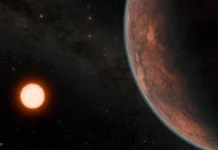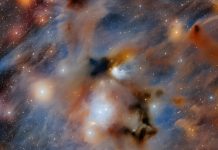
The Japanese Space Agency’s Hayabusa2 spacecraft embarked on an intriguing journey, reaching the asteroid Ryugu in June 2018.
Its mission?
To collect samples from this celestial body and unravel the secrets hidden within them.
Led by Professor Yuki Kimura from Hokkaido University, a team of researchers from 13 institutions across Japan delved into the samples, eager to understand the magnetic and physical bombardment environment of interplanetary space.
Their findings, detailed in the journal Nature Communications, shed light on fascinating phenomena.
Utilizing a technique called electron holography, the scientists peered into the samples, examining their structure, magnetic, and electric properties.
This method allowed them to delve deep into the heart of Ryugu’s composition, revealing insights inaccessible through conventional means.
Asteroid Ryugu, like many objects in space, endures a relentless onslaught from various sources. The solar wind, a stream of high-energy particles emitted by the sun, and micrometeoroids bombarding its surface shape its environment.
This constant barrage leads to changes known as space-weathering, altering the asteroid’s composition over time.
By studying samples directly retrieved from Ryugu, researchers gain a unique opportunity to observe the long-term effects of space exposure.
Unlike meteorite samples found on Earth, which endure the fiery descent through the atmosphere, these samples remain pristine, offering a clearer window into the mysteries of space.
Professor Kimura highlights the significance of their findings, emphasizing the role of asteroids in unraveling the history of our solar system.
The remnants of magnetic fields preserved within these samples provide valuable insights into the early stages of our solar system’s formation. Understanding these magnetic signatures enables scientists to piece together the puzzle of our cosmic origins.
Moreover, the research extends beyond mere academic curiosity. Insights gleaned from these studies could aid in interpreting data gathered from remote sensing missions.
By deciphering the relative ages of planetary surfaces, scientists can reconstruct the timelines of celestial bodies, unlocking a deeper understanding of their evolution.
One intriguing discovery emerged from the analysis: tiny mineral grains known as framboids, comprised of magnetite, exhibited an unexpected behavior.
These grains, typically possessing magnetic properties, had lost their magnetism entirely. The culprit? Collisions with micrometeoroids, ranging from 2 to 20 micrometers in diameter, had rendered them inert.
Surrounding these framboids were thousands of metallic iron nanoparticles, offering tantalizing clues about Ryugu’s magnetic history. Future investigations into these nanoparticles may unveil further secrets, providing insights into the asteroid’s magnetic field over millennia.
As Professor Kimura concludes, while the study primarily serves scientific curiosity, its implications extend to practical domains. Understanding the impact of space dust on spacecraft can aid in designing robust systems capable of withstanding the rigors of interplanetary travel.
By harnessing the knowledge gleaned from Ryugu’s samples, scientists pave the way for future exploration, both in understanding our cosmic past and shaping our interstellar future.
The research findings can be found in Nature Communications.
Copyright © 2024 Knowridge Science Report. All rights reserved.



